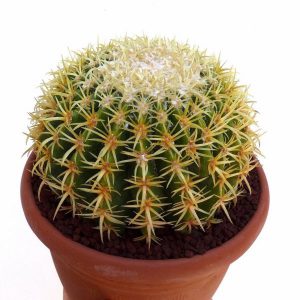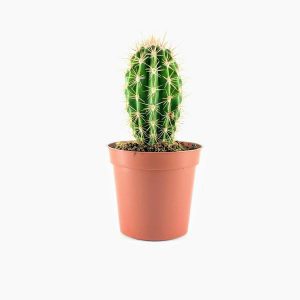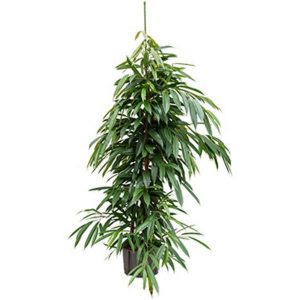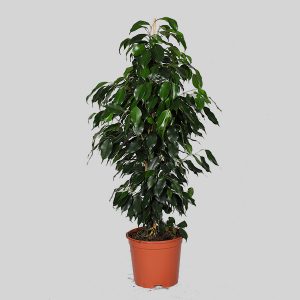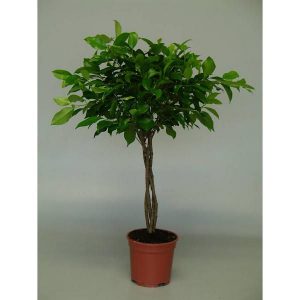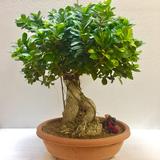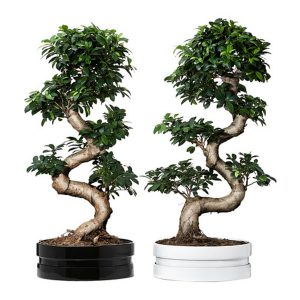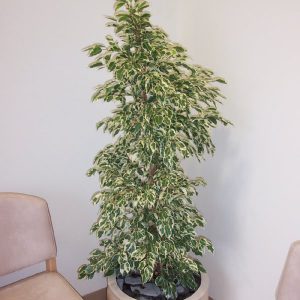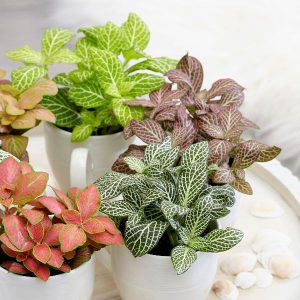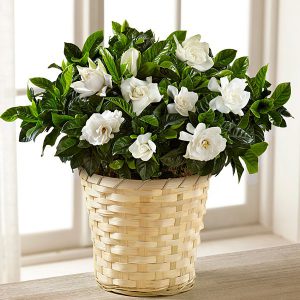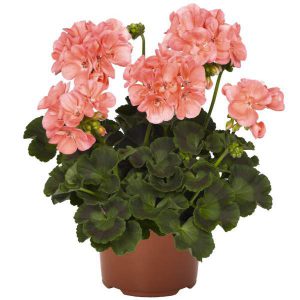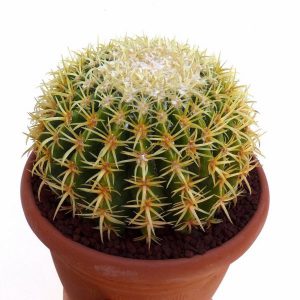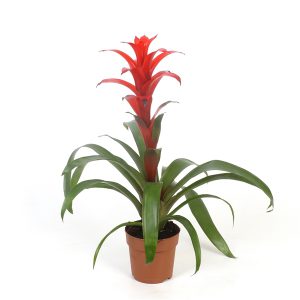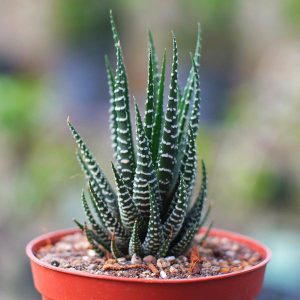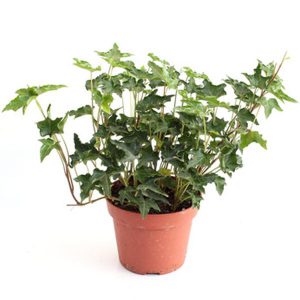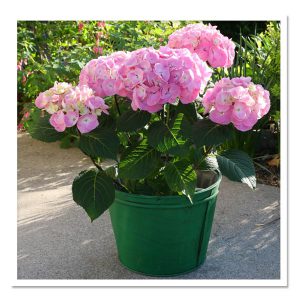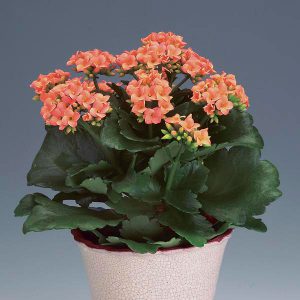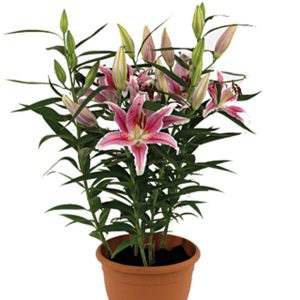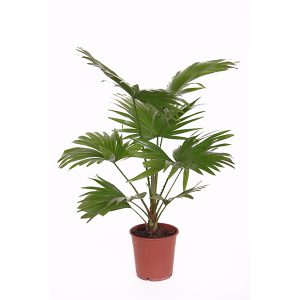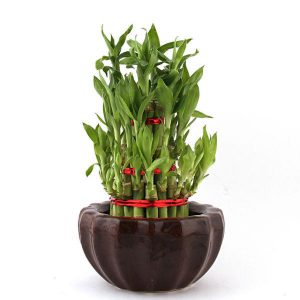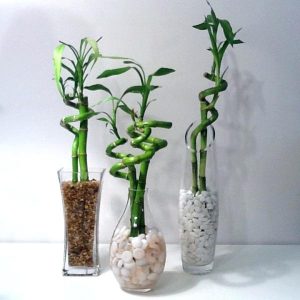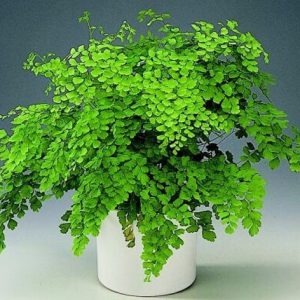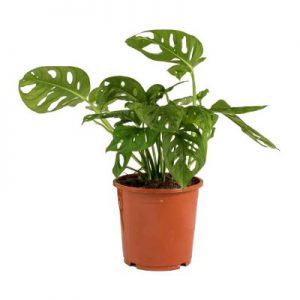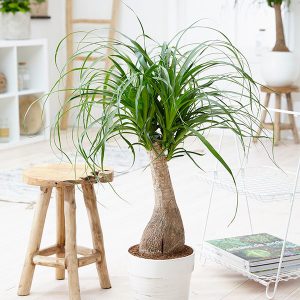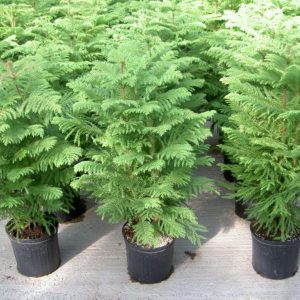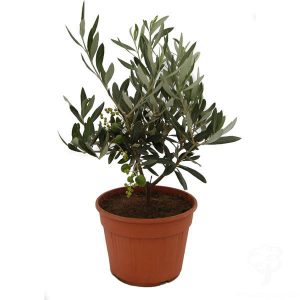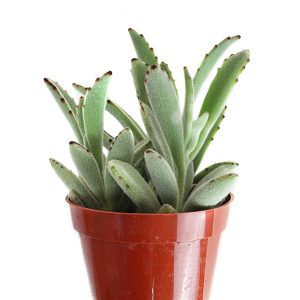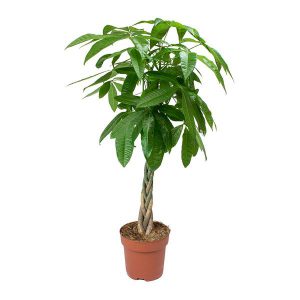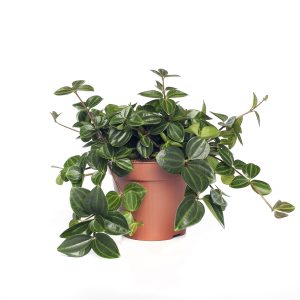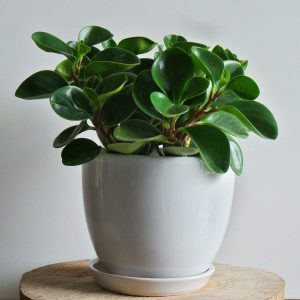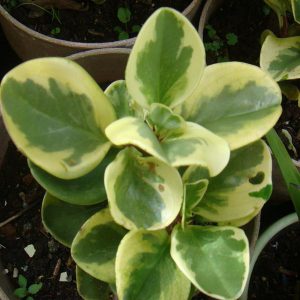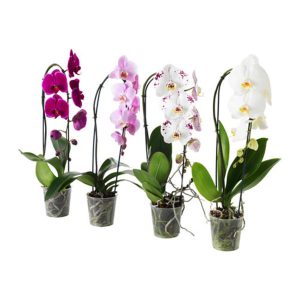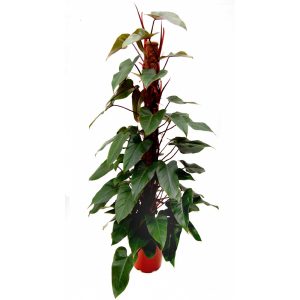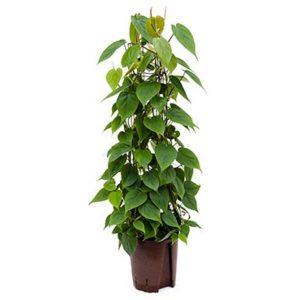Indoor Plants
Dracaena White stripe
A house plant which has wonderful foliage. Dracaena ‘White Stripe’ (Dracaena fragrans) is a sensational variety with very distinctive dark green leaves streaked with white.
- The sharp contrasting stripes make this an attractive plant for the home.
- Stand your Dracaena in a light spot out of direct sunlight.
- Dracaena are wonderful house plants that originate from Africa and southern Asia. The name comes from the Ancient Greek meaning ‘female dragon’.
- These easy-to-care-for house plants are long living and they also purify the air, meaning they are good for your health!
- These have thick, robust stems.
- Easy to care for.
- Do not allow to stand too long in water. Water regularly but allow to partially dry out before watering again.
- Protect from frost.
- You will receive 3 plants in one pot with varied stem heights 90, 60 and 30 cm.
- Delivery height 130-150 cm,
AED 210.00Add to cart
Echino cactus Grusonil
Echinocactus grusonii, commonly known as mother-in-law’s cushion, stands out especially due to its golden spines, which form a beautiful contrast to the lush green of the cactus’ body. In addition, this cactus species is exceptionally robust and does not come with many requirements in terms of tending. Learn from these professional care instructions what exactly it is that your cactus needs.
AED 40.00Add to cart
Echinopsis-Cactus-Grusonil
It is one of the most popular cacti in cultivation and has increasingly become popular as an architectural accent plant in contemporary garden designs.[citation needed]
The cactus is considered easy and relatively fast growing in warmer climates around the world. The plants do have some basic requirements; an average minimum winter temperature of 12 °C (53.6 °F); and good drainage with less watering in winter.[2] Excess water in cool periods may lead to rot. Golden Barrels are hardy to about 15 °F (−8 °C) for brief periods.
Beyond Central Mexico, Echinocactus grusonii specimens may also be seen in collections of desert plants in many botanical gardens. In the UK it has gained the Royal Horticultural Society’s Award of Garden Merit
AED 45.00Read more
Ficus Amstel king
- Care Instructions–
- Strong indirect light to some direct sun.
- Water thoroughly when the soil is dried out on the surface. A plant like this in a 14″(35cm) diameter pot can take up to 1 gallon, or almost 4 liters, of water when necessary. A plant in a 10″(25cm) pot can take as much a 2 quarts (almost 2 liters) of water when necessary. They like a good soak,
- Make sure the plant is well potted and if necessary add some potting soil. It is essential to make sure the soil is evenly packed especially around the inner edge so that it is watered evenly. Press the soil down firmly around the inner edge and make sure there is enough soil covering the top roots but not covering the bottom of the trunk.
- The leaves would like a dusting from time to time and an outdoor shower once or twice a year would be very helpful.
They can be pruned to stay in the space they have been given. Fertilize regularly for fullest growth.
AED 220.00Add to cart
Ficus benjamina
Ficus benjamina, commonly known as weeping fig, benjamin fig or ficus tree, and often sold in stores as just ficus, is a species of flowering plant in the family Moraceae, native to Asia and Australia. It is the official tree of Bangkok.
Plant Care
- Keep Ficus benjamina plants in large planting pots filled with a soil-based potting mix. …
- Place pots indoors in bright indirect light, and outdoors in full sun to part shade.
- Let the soil around the shrub dry out between waterings.
AED 165.00Add to cart
Ficus Benjamina Twisted
Ficus trees can maintain their tree-like shape regardless of their size, so this makes them ideal for bonsais or for massive houseplants in large spaces. Their leaves can be either dark green or variegated. In recent years, some imaginative nurseries have started to take advantage of their pliable trunks to braid or twist the plants into different forms.
Plant the ficus in a well-draining potting mix. Purchase a loamy soil with added vermiculite or perlite for drainage, or mix your own. Use 3 parts loam 1 part peat and 1 part sand for a well-draining mixture. Plant in a deep pot with drainage holes so the water can run out. Place the ficus near a window in a room that gets bright light in the summer with more moderate light in the winter. Turn the plant occasionally so all the growth does not occur on one side.
Water weekly during the summer with room-temperature water. Add water until it drains from the bottom of the pot. Discard the excess water if it flows into a container. Adjust the watering for your particular plant. Allow the soil to dry slightly between waterings. If the leaves turn yellow and begin to drop, you may need to increase or decrease the amount of water. Check the root ball. If the roots are soggy water the plant less often. If they are dry, increase watering. Humidity and light levels affect the amount of water needed.
AED 600.00Add to cart
Ficus bonsai Ginseng
Ginseng Ficus is a low-maintenance bonsai that can be grown indoors or outdoors. Of course if you live in an area where temperatures drop below 68 degrees, your little tree should be grown indoors. This type of bonsai can survive without direct sunlight, but you will have a much happier and healthier tree if you place it near a window or an area that receives a lot of sunlight.
AED 85.00Add to cart
Ficus Lyrata
Ficus lyrata, commonly known as the fiddle-leaf fig, is a species of flowering plant in the mulberry and fig family Moraceae. It is native to western Africa, from Cameroon west to Sierra Leone, where it grows in lowland tropical rainforest
Plant Care
- Light – Needs Bright, Filtered Light. …
- Watering – Keep soil evenly moist at all times. …
- Fertilizer – Feed bi-weekly with a weak green plant liquid solution during the growing season.
- Repotting -Change dirt and transplant to a a larger pot annually.
AED 125.00Add to cart
Ficus Microcarpa Compacta
Ficus microcarpa is native in the range from Sri Lanka to India, Taiwan, the Malay Archipelago, the Ryukyu Islands, Australia, and New Caledonia. It is a rapidly-growing, rounded, broad-headed, evergreen shrub or tree that can reach 15m (49 feet) or more in height with an equal spread. The smooth, light grey trunk is quite striking, can grow to around 1m (3.3 feet) in diameter, and it firmly supports the massively spreading canopy.
The glossy, dark green, leathery leaves are densely clothed on large, somewhat weeping branches. New growth, produced all year long, is a light rose to chartreuse color, giving the tree a lovely two-toned effect.
AED 950.00Add to cart
Ficus Starlight
Description for Ficus Starlight. Ficus is a pan-tropical genus of trees, shrubs and vines occupying a wide variety of ecological niches; most are evergreen, but some deciduous species are endemic to areas outside of the tropics and to higher elevations.
Under glass grow in loam-based potting compost with added fine bark chippings in full or filtered light. When in growth water moderately and apply a nitrogen rich fertiliser monthly. Keep just moist in winter. Plants benefit from regular misting and from being stood on a pebble tray, particularly in a warm dry atmosphere. Their main requirement is an even temperature, in winter not below 13°C and without the sharp fluctuations found in so many houses. Avoid draughty situations and keep them away from heater fumes
AED 170.00Add to cart
Gardenia
Gardenias are native to the tropical and subtropical regions of Africa, southern Asia, Australasia and Oceania. This species can be difficult to grow elsewhere because it demands high humidity to thrive and bright (not direct) light. Some types of gardenias can be grown as houseplants
- Gardenia plants need high humidity.
- A loose, well-drained organic soil is recommended.
- Do not over-water gardenias.
- Fertilize with an acid fertilizer.
AED 50.00Add to cart
geranium
Whether indoors or out, geranium care is pretty basic. In addition to watering, which should be done deeply and once the soil begins to feel dry indoors or at least weekly outdoors (though potted plants may need daily watering in hot weather), fertilizing is usually necessary. Use a water-soluble houseplant fertilizer or a 5-10-5 fertilizer with additional organic matter every four to six weeks throughout their active growing season. Indoor or potted plants may require repotting once they become overgrown, usually noted by wilting between waterings. Regular deadheading of spent blooms will also help encourage additional blooming. When watering outdoor plants, it’s best to avoid overhead irrigation, as this can lead to pests or disease issues. Geranium plants root easily from cuttings and can be propagated in fall for overwintering of outdoor plants. They can also be dug up and brought inside.
AED 10.00Read more
Golden Barrel Cactus
Echinocactus grusonii, popularly known as the golden barrel cactus, golden ball or mother-in-law’s cushion, is a well known species of cactus, and is endemic to east-central Mexico
- Keep your cactus at low to moderate temperatures averaging between 50 and 75℉ during the day. …
- The golden barrel cactus grows best when given plenty of sunlight. …
- During warm months, you should water your golden barrel cactus on a regular basis whenever you start to notice the soil drying out.
AED 40.00Add to cart
guzmania torch
Light:
Like the other bromeliads, Guzmanias prefer and are happiest in bright, natural light. An east or west exposure would be best but just be sure they avoid exposure to any direct, hot sun because they’ll burn. They’ll be fine in low light for a few weeks, but they won’t be as long lasting. If you want them for the long haul & have them produce pups, bright light is the ticket.
Water:
Guzmanias have a tank, cup, vase or urn (the central well which the flower stalk arises out of) which is how they collect a lot of the water they need. You want to keep that vase about 1/4 of the way full of water & flush it out with fresh water every 1-2 months to avoid any build up of bacteria.
Keep even less water in the tank if you have low light &/or cool temps. You don’t want the plant to rot out. I let the cup go dry for 2-7 days before I refill with a little water.Because moisture is collected through their leaves, they’d appreciate a spraying or misting once or twice a week. I also moisten the growing medium every 1-2 months depending on the temperatures and the season. Like all houseplants, you want to water less in the late fall through winter.
AED 55.00Add to cart
Haworthia
Will take various light conditions, but neither direct sunlight or deep shade. Direct sunlight can make the leaves of all Haworthia’s go an ugly purple or brown colour and deep shade tends to weaken the plant over a prolonged period.
Watering
A surviving plant will get by with watering just once a month, however to get the plant thriving it will need to be done at least once a fortnight. Very tolerant of underwatering, but will succumb quickly to rotting if overwatered.
Humidity
Not important.
Temperature
Average warmth between Spring and Autumn / Fall. Cooler in Winter although if possible, not “cold” and absolutely no lower than 4°C / 40°F
AED 40.00Add to cart
Hedera Helix Hanging
English Ivy (Hedera helix) plants prefer an evenly moist environment. Water the plants freely during growth. Keep English Ivy houseplants moist in the winter. Spraying English Ivy with soft water weekly will help prevent spider mites from infesting the plants.
AED 40.00Add to cart
kalanchoe
Green Maintenance
Really Easy, Low Maintenance
- Water once every two weeks
- The White Princess loves bright light
- Let the soil dry out in between waterings
- The perfect indoor plant as its likes to be warm
- That is pretty much it. Sit back with your feet on the table & watch this beautiful green creation grow in all of its glory!
-
Where To Put Me?
Fool-Proof Guide to Keeping Me Alive!
- Bedroom
- Living Room
- Kitchen
Bathroom- Office
- Reception
AED 30.00Add to cart
Kentia Palm
As with other indoor plants, Kentia palm care requires the right watering and lighting levels for a long life. Fortunately, because the Kentia palm is so forgiving, it will tolerate low-light and low-humidity conditions, as well as dust, heat, and general neglect. Plant your Kentia in fast draining potting mix, preferably on the sandy side. Find an area in your home that receives indirect light through a window; it does not necessarily need to be an extremely bright spot. Water Kentias only when the top inch of soil starts to dry out. Over watering can lead to root rot if the soil mix does not drain fast enough.
AED 200.00Add to cart
Livingstonia
Chinese Fan Palm is a BIG plant with sprawling fanlike fronds that grow up to 2 ft (60 cm) across.
When mature, this palm is a picture of elegance. Its broad, fan-shaped foliage is carried on tall stems, making it a graceful ornamental for the home. Treat it right and you’ll enjoy your Chinese Fan Palm for many years.
Put it in a bright spot, but out of direct sunlight. You’ll find that this palm is adaptable to average home temperatures and is easy to please.
Older fronds may turn brown. Cut off old fronds near the trunk, using sharp pruners.
Brown leaf tips are fairly common on indoor palms,
AED 205.00Add to cart
Lucky Bamboo (Dracaena Bravni)
The lucky bamboo grown in it’s native country (West Africa) can grow up to 5ft tall (or much more), and as a house plant up to approximately 2 or 3 feet. There are various cultivars of this plant and some of the most interesting are the twisted stalk types which are trained by specialist growers.
The name lucky seems to have been given by the Chinese that practice feng shui and believe in this plant brings good fortune into a home or workplace.
AED 59.00Add to cart
Lucky Bamboo stick
1- LIGHT: Lucky Bamboo does great in bright light. It’ll tolerate lower light levels just fine but it won’t grow much. Be sure to avoid putting it in direct, hot sun as it’ll burn baby burn. You may need to rotate your plant so it gets light evenly on all sides. Right now mine sits in a north window sill but I’ll need to move it as the weather heats up because the glass gets hot here in the Arizona desert when those summer days roll around.
2- WATER: There is a bit of mixed opinion regarding this. Some people never change water, some change it frequently & others every now & then. I fall into the every now & then category as I change the water about every 2 months. I make sure the water completely cover the roots in both of my arrangements so I add a bit of water as needed, every 2-7 days depending on the temps. If the water is smelling bad, then change it!
AED 80.00Add to cart
Maidenhair fern fragrance
If you’ve ever grown (or killed) a maidenhair fern, you’ll know that these delicate, lacy beauties are quite picky when it comes to their growing conditions. We’ve featured plenty of tough-as-nails plants (spider plants, Chinese evergreens, cast-iron plants, and dracaena) that can tolerate a wide range of conditions, but maidenhair ferns are the opposite. As long as you know that there’s no fooling around when it comes to meeting its needs, though, this fern will reward you with gorgeous foliage. Here is what you need to know to keep a maidenhair fern thriving.
Monestera Deliciosa
Monstera plant care is relatively low maintenance. Theplant needs warm interior temperatures of at least 65 degrees Fahrenheit (18 C.) or warmer. Swiss cheese plantalso needs moderately moist soil and high humidity
AED 315.00Add to cart
Nephrolepis Exaltata Ariane
Nephrolepis exaltata, the sword fern, Boston fern, is a species of fern in the family Lomariopsidaceae, native to tropical regions throughout the world
AED 40.00Add to cart
Nolina Recurvata
Light
Beaucarnea grows slowly at the best of times and although the plant will do OK in a slightly shady spot, it does need bright light for success. If you can provide some sun you will see the plant converting this into lush new visible leaves, i.e. more light equals more growth.
Watering
At the base of the Ponytail Palm is a very thick swollen stem that has a woody appearance. This is actually a water storage organ, which is capable of supporting the plant in times of drought.
You should aim to water at least a few times a month (once a week in the height of Summer if possible) and when you do so, make sure it’s a thorough watering. The water reserves will support the plant if you forget to water it from time to time
Temperature
When it comes to temperature requirements unlike most house plants the Ponytail Palm is close to being hardy and will accept almost sub zero temperatures. Exposing your plant to such a low temperature however would surely be by accident and not a regular occurrence right? *wink*. Aim for no lower than 7°C / 45°F and although higher temperatures will be accepted, try to achieve 21°C / 70°F to provide good growing conditions.
AED 335.00Add to cart
norfolt island pine
In the spring, summer, and early fall, feed the Norfolk Island pine with a balanced fertilizer every two weeks. When the plant needs to be watered, add some liquid fertilizer to the water and feed the tree.
- A balanced fertilizer is one with equal parts nitrogen, phosphorous, and potassium.
- Norfolk Island pines do not need to be fed during dormant periods in late fall and winter.
- To know when the growing phase starts up again, look for light green growth on the tips of the branches in spring.
AED 200.00Read more
Olive dwarf
Olive trees can reach up to ten feet in containers, unless your ceilings are particularly high you’ll probably want to opt for a dwarf variety. Dwarf olive trees will grow as tall as six feet, although you can keep them shorter by pruning them
AED 230.00Add to cart
Panda plant kalanchoe tomentosa
Locate the indoor panda plant in medium to bright light. As with most succulents, soil should be allowed to dry between waterings. In fact, watering is a limited part of panda plant care. When you do water, do so completely while giving the plant the infrequent drink
Patchira Aquatica
Shady areas or windows with indirect sunlight keep this plant happy. If the leaves begin to yellow, find a sunnier place. While it can tolerate some full sunlight, too much will burn the leaves.
If grown indoors, pay close attention to the health of your plant and change its location as needed throughout the year. Occasionally turning the plant is a good idea, too.
This tree likes a deep drink of water about once a week. Allow the top two or three inches of soil to dry before the next watering. Make sure there is good drainage so that the roots are not constantly swimming, which leads to rot. It likes humidity as well, like what you’d find in a bathroom. Consider placing the pot on a dish of pebbles and water.
If you find your money tree plant is dying, it may be due to too much watering. It can be really hard to resist grabbing the watering can when the plant drops leaves. This often happens after the initial change of environment, like repotting, so sit on your hands if you must to keep that watering can on the shelf.
As if this weren’t maddening enough, the winter months will mean even less watering as growth slows.
AED 500.00Add to cart
Peperomia Angulate
Really Low Maintenance
- Pop into a shady spot
- Allow the soil to dry between watering
- Water once every 2-3 weeks
- Avoid over-soaking the soil
AED 90.00Add to cart
Peperomia Obtusifolia
Water Peperomia houseplants sparingly and allow the soil to dry as deep as 5 inches between waterings. Fertilize occasionally with a balanced houseplant food after watering.
These plants are easy to grow in the house. They like warmth, but do not need high humidity. They like bright light, but do not need direct sunlight. In fact, peperomia obtusifolia makes a good ground cover in shade.
Peperomias do not like deep shade or strong sunlight, two very big extremes. Grow them somewhere in between and you’ll be fine.
During the summer months, temperatures between 68 – 78 F. In the winter, temperatures should not go below 50 F.
AED 40.00Add to cart
Peperomia White Marble
The Marble Peperomia is characterized by its thick spoon shaped variegated leaves. It comes in a 4″ tall by 4″ wide plastic nursery pot. They do well in low-medium light, watered weekly. This houseplant is pet-friendly!
Plant Care
- BRIGHTNESS
- Medium to Bright
- Medium indirect light to dappled sun.
- SUN EXPOSURE
- Indirect
- Indirect light to dappled sun.
- WATER
- Weekly
- Allow potting mix to dry out completely between waterings.
- HUMIDITY
- Any!
- Don’t sweat it. Any humidity level will do.
AED 40.00Add to cart
Phalaenopsis Orchid Plant
Phalaenopsis Blume, known as moth orchids, abbreviated Phal in the horticultural trade, is an orchid genus of approximately 60 species. Phalaenopsis is one of the most popular orchids in the trade, through the development of many artificial hybrids.
- A moderately bright windowsill or similar spot to growin.
- Watering when it begins to dry out, usually every 7 to 10 days.
- Fertilizing with a fertilizer made for orchids.
- Repotting when the bloom is finished with fresh orchid mix.
AED 70.00Add to cart
Philodendron Red Emerald
These plants are considered poisonous and should be kept away from pets and children. Read more about common houseplants that are poisonous in Don’t Feed Me To Your Cat! A Guide to Poisonous Houseplants
AED 165.00Add to cart
Philondredon Scandens ( Sweetheart Plant)
Botanical Name: Philodendron scandens
Heartleaf philodendron is a popular house plant because it is extremely easy to grow. It’s also known as the Sweetheart Plant.
Heart-shaped, glossy leaves emerge bronze, then quickly turn green. The leaves are typically 2-4 in (5-10 cm) long, and cover its long, slender stems that can grow to 4 ft (1.2 m) or more.
AED 90.00Add to cart


